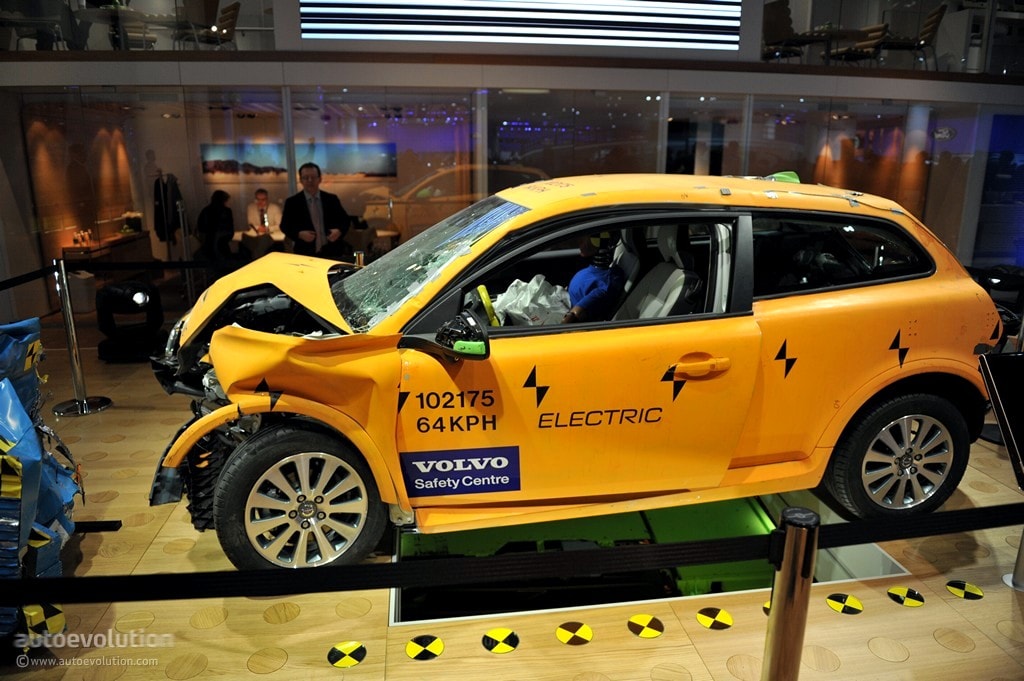Last year, Volvo brought along a road-ready C30 Electric to the Detroit Auto Show. This time, the company which prides itself on safety is showing what the EV looks after a 64 km/h (40 mph) controlled crash. It was meant to “show the world what a truly safe electric car looks like after a collision with high-speed impact,” according to Volvo CEO Stefan Jacoby.
A heavy battery pack meant the carmaker had to rethink the way the car’s safety zones need to be designed. “Our tests show it is vital to separate the batteries from the electric car’s crumple zones to make it as safe as a conventional car. In Detroit we are the first car maker to show the world what a truly safe electric car looks like after a collision with high-speed impact,” Jacoby also said.
The crash-test was carried out in early December 2010 at Volvo Cars' crash test laboratory, using a car fitted with a fully charged battery. It was at a a so-called offset collision angle, where 40 percent of the front hit a barrier at 40 mph (64 km/h).
According to the manufacturer, the C30 Electric comes with a range of up to 95 miles (150 km), thanks to a 24 kWh pack of lithium batteries.
"The test produced exactly the results we expected. The C30 Electric offers the very same high safety level as a C30 with a combustion engine. The front deformed and distributed the crash energy as we expected. Both the batteries and the cables that are part of the electric system remained entirely intact after the collision," according Jan Ivarsson, Senior Manager Safety Strategy & Requirements at Volvo Cars.
A heavy battery pack meant the carmaker had to rethink the way the car’s safety zones need to be designed. “Our tests show it is vital to separate the batteries from the electric car’s crumple zones to make it as safe as a conventional car. In Detroit we are the first car maker to show the world what a truly safe electric car looks like after a collision with high-speed impact,” Jacoby also said.
The crash-test was carried out in early December 2010 at Volvo Cars' crash test laboratory, using a car fitted with a fully charged battery. It was at a a so-called offset collision angle, where 40 percent of the front hit a barrier at 40 mph (64 km/h).
According to the manufacturer, the C30 Electric comes with a range of up to 95 miles (150 km), thanks to a 24 kWh pack of lithium batteries.
"The test produced exactly the results we expected. The C30 Electric offers the very same high safety level as a C30 with a combustion engine. The front deformed and distributed the crash energy as we expected. Both the batteries and the cables that are part of the electric system remained entirely intact after the collision," according Jan Ivarsson, Senior Manager Safety Strategy & Requirements at Volvo Cars.

























